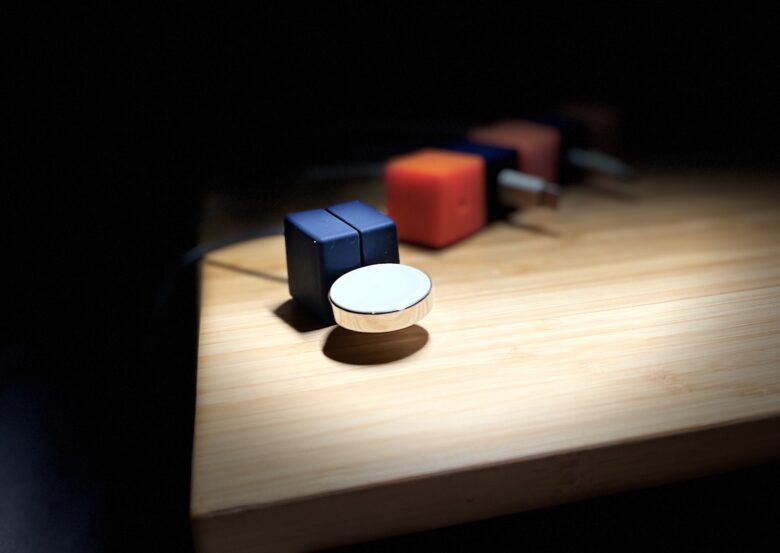Almost every day, our robot vacuum tangles itself in charging cables, which the kids toss cavalierly across the floor. Snaking from behind the couch, the cords wait like baited fishing lines to ensnare our unsuspecting Roomba. It’s an unmitigated cable management disaster.
Luckily, we just got some Cable Blocks from Function101. Cable Blocks are rubbery little magnetic blocks that sit on your desk or nightstand and hold cables out of the way. It’s a simple and clever design.
Here’s why Cable Blocks are my favorite cable management system.
Function101 Cable Blocks review

Photo: Leander Kahney/Cult of Mac
Cable Blocks are about the same size as a bouillon cube, but are made from soft silicon — and are nowhere near as tasty.
Each block has a slot on top to let you slide a cable inside. The blocks are weighted so they sit firmly on a table without any glue or screws. And they are magnetized so they stick together — or to a metal surface. (They also stick to Function101’s Desk Mat Pro, a gorgeous faux leather desk topper with a layer of metal inside.)
It’s easy to line up several blocks holding all your cables on the edge of your desk or nightstand. The Cable Blocks hold firm and keep your cords out of the reach of passing robot vacuum cleaners. They’ll keep your bedroom, living room or office a lot tidier.
I have a line of them under my iMac at work to keep all my cables neatly organized. I also use a couple of Cable Blocks in the car. They tame car cable clutter quite well.
Cable Blocks are especially good for Apple Watch chargers, which tend to slide off any surface they’re on. Likewise MacBook charging cables — without Cable Blocks, they always plunge off the table or couch.
Organize messy cables
Cable Blocks are endlessly reconfigurable. You can put together a line of cubes to hold all your cables or just use one or two. If you use a particularly heavy cable, join two or three blocks together magnetically and the extra weight will provide more stability.
Cable Blocks also come in a range of colors — navy, gray, orange, light blue and pink.
The best cable organizers

Photo: Leander Kahney/Cult of Mac
I’ve tried other cable-management systems in the past. None of them worked as well or proved as versatile as Cable Blocks.
Some other systems attach to your desk and require you to unclip cables to use them, then clip them back in when done — which no one in my family ever does. Cable Blocks are great because they stay attached to the cord. It’s easy to magnetically clip the blocks back into place when done.
The only complaint is that sometimes the blocks slide down the cable and you have to slide them back up. However, they will stay in place if the cable gets fatter at the business end, which most Apple cables do.
Cable Blocks are my new favorite cable-management system. They look cool and they keep the cables organized with minimal effort.
Pricing
Cable Blocks cost $29.99 for a pack of four. Buy from: Cult of Mac Store
Function101 provided Cult of Mac with a review unit for this article. See our reviews policy, and check out more in-depth reviews of Apple-related items. We originally published this review on April 22, 2022. We updated it with new color and pricing info.
![Tame cord spaghetti with Function101’s Cable Blocks [Review] Function101 Cable Blocks cord management system](https://www.cultofmac.com/wp-content/uploads/2022/04/Function_101_Cable_Blocks_cord_management_3.jpeg)

